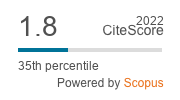Favorable Direction in a Chemical Reaction Through the Maximum Hardness Principle
DOI:
https://doi.org/10.29356/jmcs.v57i1.232Keywords:
Maximum hardness principle, Hard-Soft Acid-Base (HSAB) principle, hardness, Koopmans’ TheoremAbstract
Recently, an assessment regarding the validity of maximum hardness principle has been done taking 34 exothermic chemical reactions (Poater, J.; Swart, M.; Solà, M. J. Mex. Chem. Soc. 2012, 56, 311) in which only 46% and 53% of the total reactions have greater hardness for the products and the reactants than those for the reactants and the transition states, respectively. They have also mentioned that a larger set of reactions should be studied to draw a general conclusion regarding the validity of maximum hardness principle. We have noticed that the reactions having fewer number of reactants than that of products and / or very hard atoms like H, N, O, F or very hard molecules like H2, N2, HF, HCN, CH4, etc. appearing in the reactant side, are more likely to disobey maximum hardness principle. In addition, dependence of hardness values on level of theory, basis sets, definitions, formulas, approximations should be kept in mind before criticising the validity of maximum hardness principle. Since these electronic structure principles are qualitative in nature, one should not expect them to be valid in all cases.Downloads
Downloads
Published
Issue
Section
License
Authors who publish with this journal agree to the following terms:
- Authors retain copyright and grant the journal right of first publication with the work simultaneously licensed under a Creative Commons Attribution License that allows others to share the work with an acknowledgement of the work's authorship and initial publication in this journal.
- Authors are able to enter into separate, additional contractual arrangements for the non-exclusive distribution of the journal's published version of the work (e.g., post it to an institutional repository or publish it in a book), with an acknowledgement of its initial publication in this journal.









